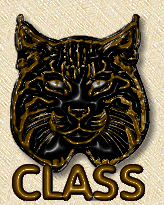|
European Shorthair
Temperament:
*Intelligent
*Hardy
*Sensible
*Quiet
*Placid
*Gentle
*Dignified
Like its less pedigreed cousins that roam the fields, backyards and barns of
Europe, the European Shorthair is intelligent, moderate, adaptable,
self-sufficient and inquisitive. What more could a cat be?
|
| Head: Large
and rounded |
| Eyes: Large
and round; most often yellow, but all colors have been seen |
| Ears: Large;
rounded tips |
| Body: Medium
to large; muscular; not as stocky as British, with longer legs |
| Coat: Short,
plush and thick; resilient |
| Tail: Short
and thick |
| Patterns: Sable,
blue, champagne, platinum, chocolate, lilac, red, cream, seal tortie, blue
tortie, chocolate tortie, lilac tortie |
| Breed History: There
is a certain amount of competition between the British Isles and the
Continent, and it is perhaps for this reason the European Shorthair was
designated a separate breed from the British Shorthair. Both cats are
descended from the tough hard working cats that accompanied the Romans across
Europe and north to Britain. Both are handsome, sturdy animals with round
heads. The European has longer legs and a slightly leaner build than the more
Churchillian British Shorthairs.
The Shorthair- both European and British-
began as a distinct breed for showing when cat fanciers in the late 1800's
decided to improve the strain of the ordinary cats of Europe by careful,
professional breeding. The British had a head start, and the first pedigreed
Shorthairs in Europe were imported from Britain. Soon breeding began in
earnest on the Continent, and by 1982 the European Shorthair was recognized as
a separate breed for show purposes. Although the first pedigreed Shorthairs
were blue or black, today an enormous range of colors and patterns are
accepted in both the British and European types.
|
| Additional Notes: |
|

|
|

|
|

|

|

|
|